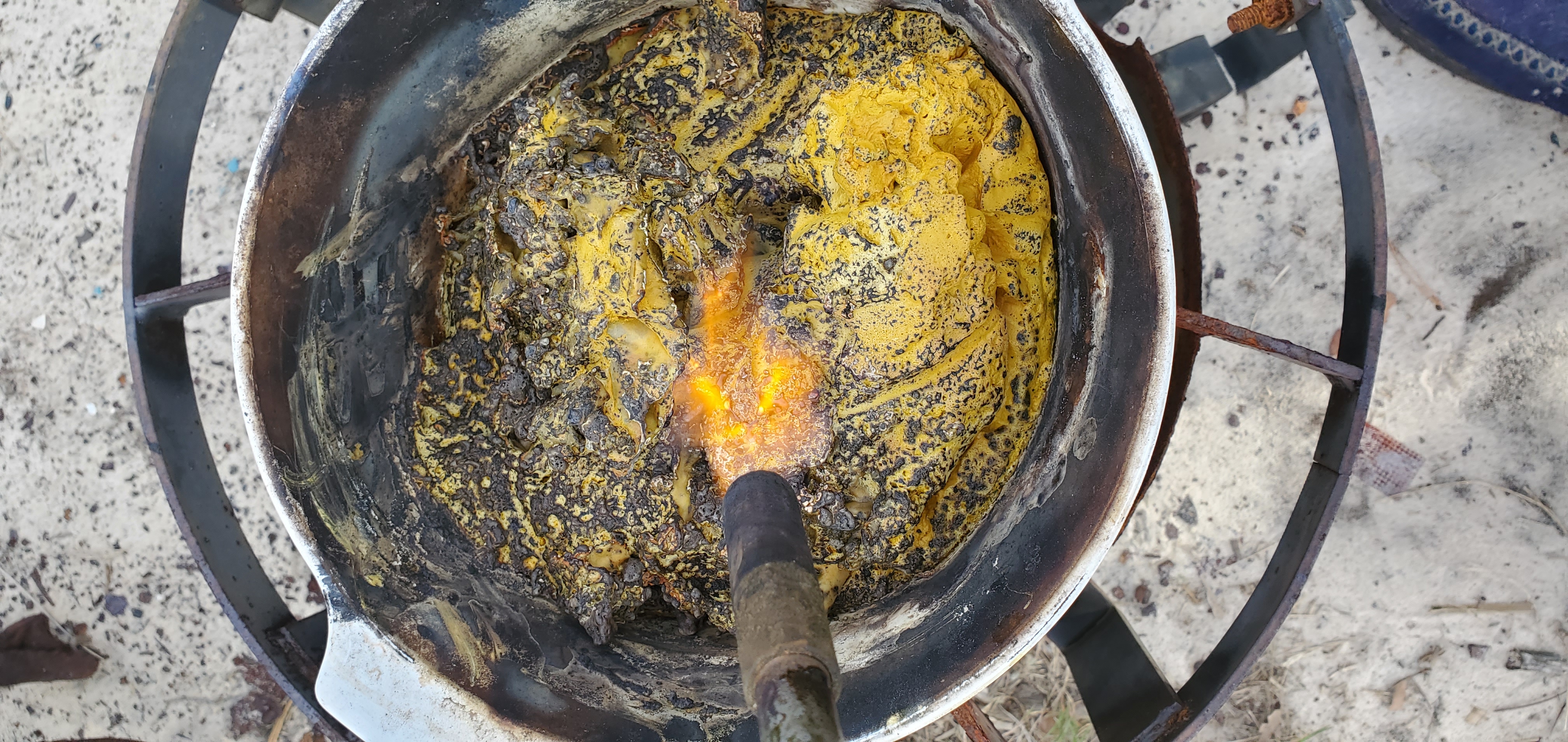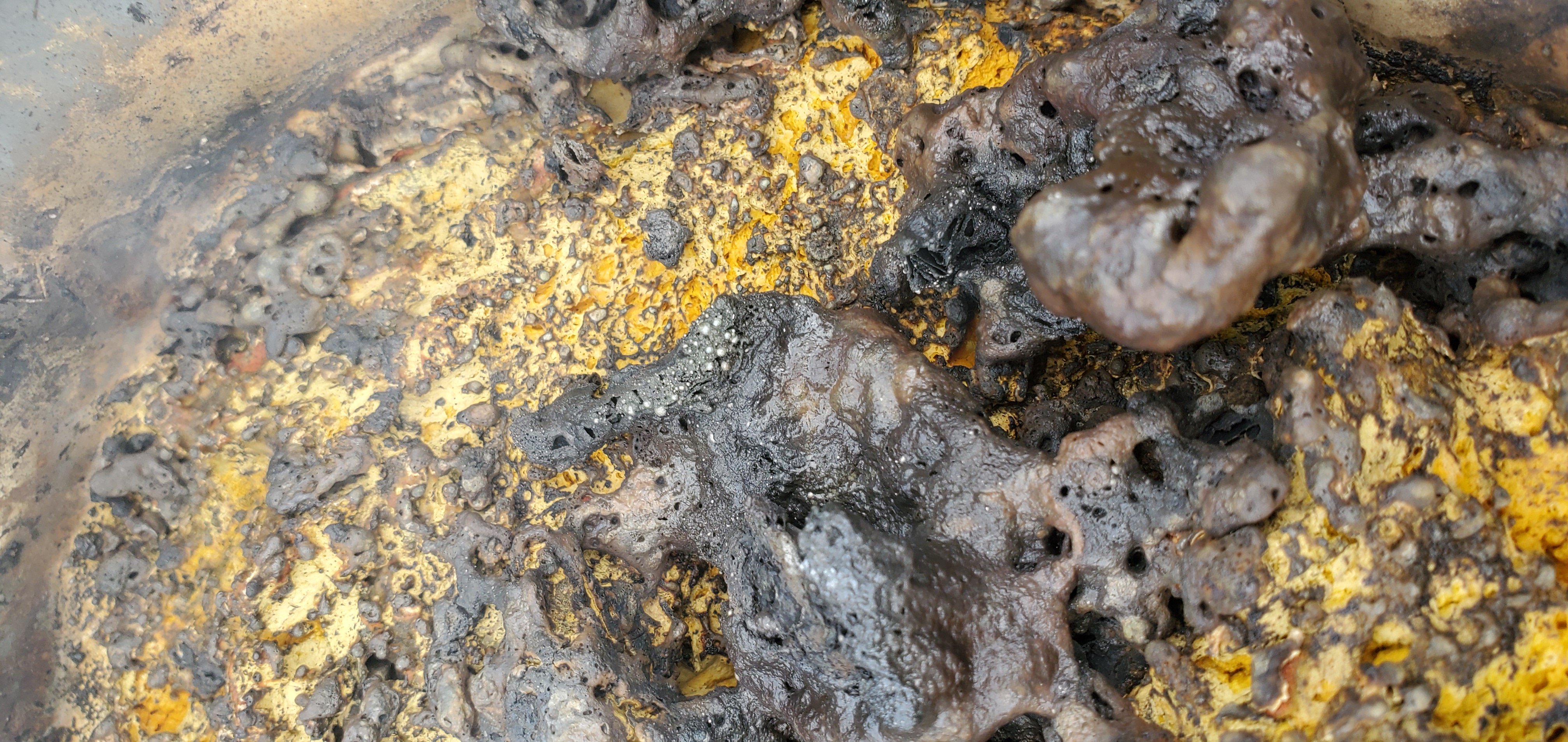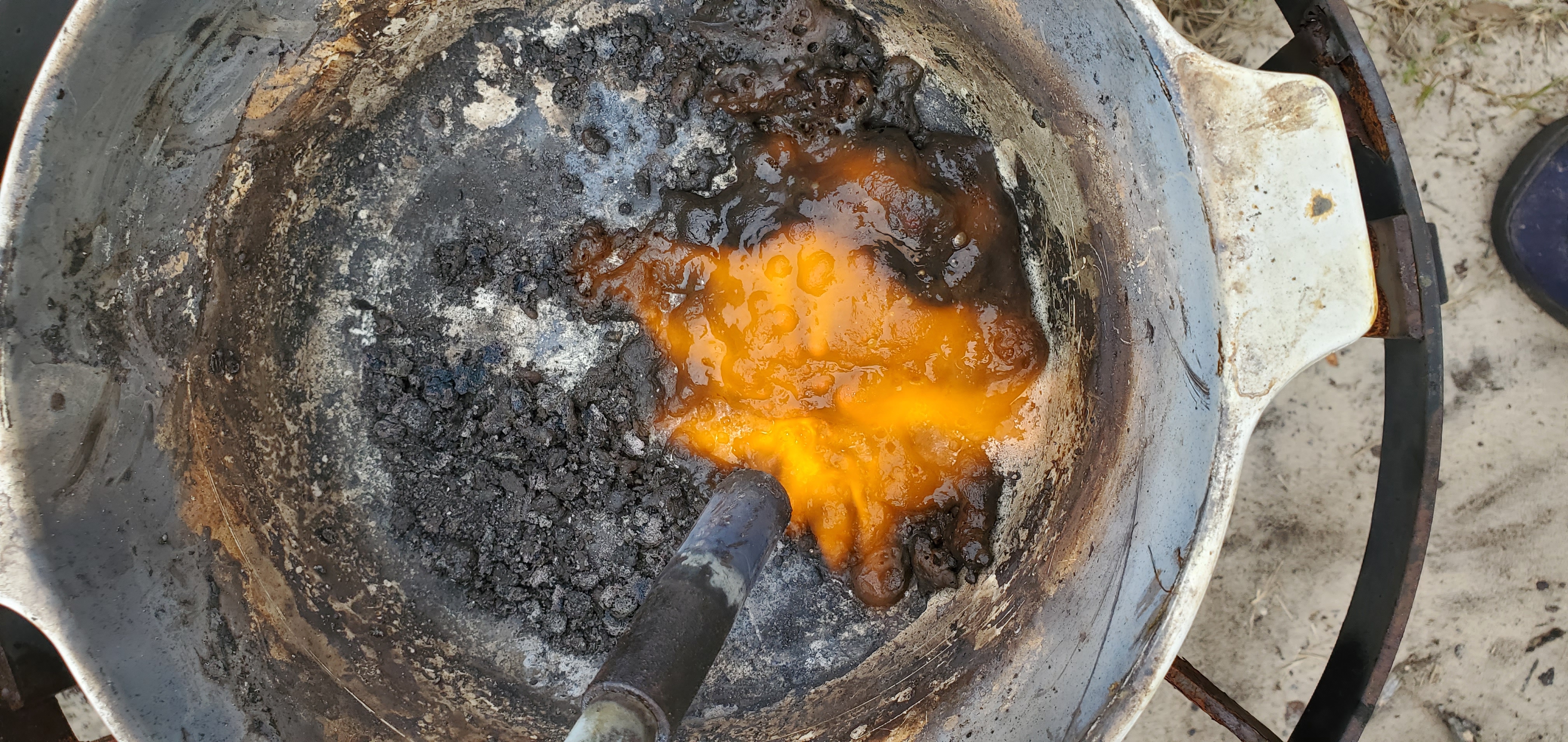I have processed many, many ounces of Pd-DMG complex and the easiest method by far is to calcine it.
1)After through washing place your slightly moist yellow complex and filter paper in a large porcelain, fused quartz, or stainless steel container that is large enough to allow it to be spread out into a layer a few centimeters thick.
2) Gently heat the container from above with a propane canister torch to until all the moisture is driven off. Go low and slow here.
3) The complex will darken to a char like appearance around the edges and finally ignite producing its own flame. Stop heating and allow the mass to burn.
4) Oxygen flow and an occasional heating from above are required to initiate this process to the point where it proceeds on its own.
5) After the complex fully burns down to a crunchy stiff mass begin Gently heating from above until it changes from the char color to a ash grey sponge with peacock highlights.
6) Break up the Pd and heat with the torch to be sure all the interior is throughly converted.
7) Reprocess the resulting peacock colored gray material using your favorite Pd purification process which does not involve DMG from this step forward.
Here's a link to one of my post with photos:
https://goldrefiningforum.com/threads/im-having-trouble-cementing-palladium-help.32593/post-347037And
https://goldrefiningforum.com/threads/im-having-trouble-cementing-palladium-help.32593/post-347057Steve








